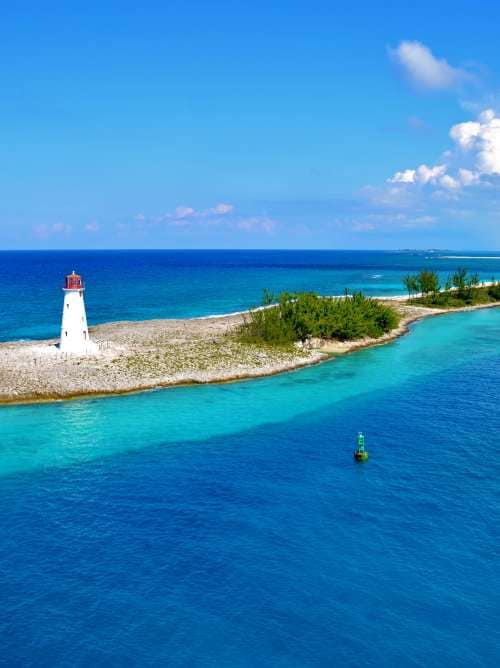
Grand Turk, Turks and Caicos Islands cruises
The oldest known residents were the Arawak-speaking Taino people, and it is believed they traded salt which formed naturally when the sea water entered shallow inland ponds and evaporated in the sun. Indeed British colonists from Bermuda arrived in the late seventeenth century to collect the salt, and they modified the system. There’s still plenty of evidence of the low stone walls used to compartment off the salt pans across the islands, not least at the Salt House museum next to Town Salina.
Another legacy of the salt producing days is the iron lighthouse on the northeast tip of the island. Built in order to protect salt-collecting ships from the notorious reef here, it was actually cast in England in 1852 and assembled where it now stands 60 feet tall.
Cockburn, capital of the islands, is a real charmer. Front Street and Duke Street are particularly easy on the eye, with their Bermudan style houses with ornate balconies, as is St Mary’s Anglican Church, a wonderful whitewashed building with crimson shutters and gates.
Sometimes the local wild donkeys wander past you, another throwback to the salt gathering days. Her Majesty’s Prison will be more welcoming than during its years of service, from the 1830s until its closure in 1994. Within its low-rise whitewashed walls, you can peer into the cells and walk the courtyards on an intriguing tour.
Where people once flocked for the salt, they often now come for the soft, white sands formed of shell and coral. The beaches include Cockburn Town Beach with a backdrop of the island’s capital, Cruise Center Beach close to where you’ll step ashore, Pillory Beach and Boaby Rock Point for excellent snorkelling, and Governor’s Beach for its sheer beauty.
Gibb’s Cay, an uninhabited island about a mile offshore, makes for a superb day trip. Its glass-clear waters teem with stingrays that happily glide among visitors paddling in the shallows.
The islands are known too for a series of dramatic limestone coastlines etched with sinkholes, underwater caves and blowholes; the Middle Caicos Ocean Hole is considered the widest blue hole in the world.
Mangrove wetlands are a feature of almost all the main islands in the group. Their shaded, shallow waterways create shelter for young sharks, rays and other fish, as well as turtles and conches. They’re well worth exploring by kayak or paddleboard. There are plenty of ways to stay active on dry land too, such as horseriding, hiking and quad biking.
In the charming Turks and Caicos National Museum. You’ll find everything from a Taino canoe paddle and centuries-old shipwreck artefacts to messages in bottles and crash-landed spacecraft. And if you’re looking for souvenirs, well, it has to be salt, whether for your bath or for your kitchen.

